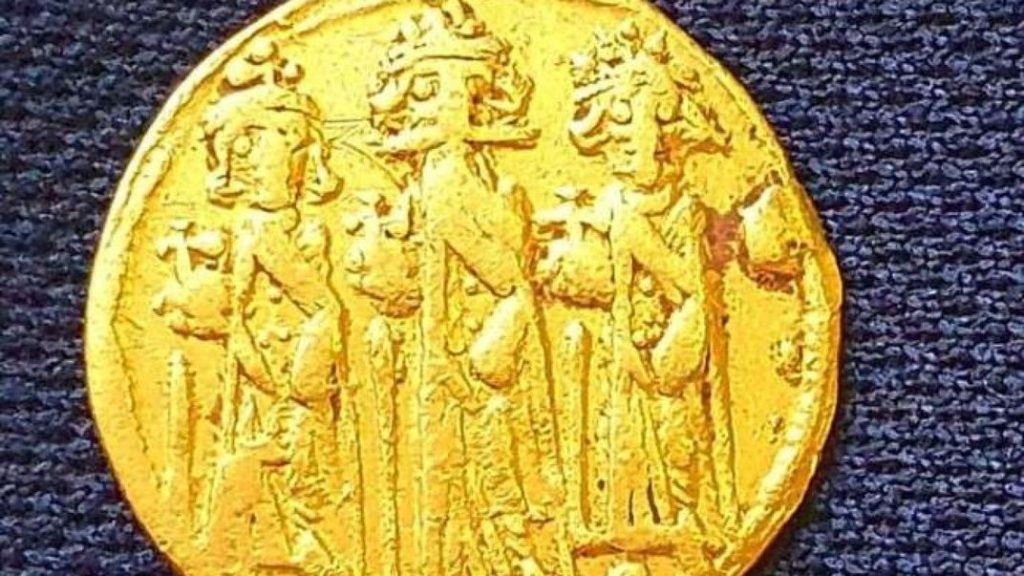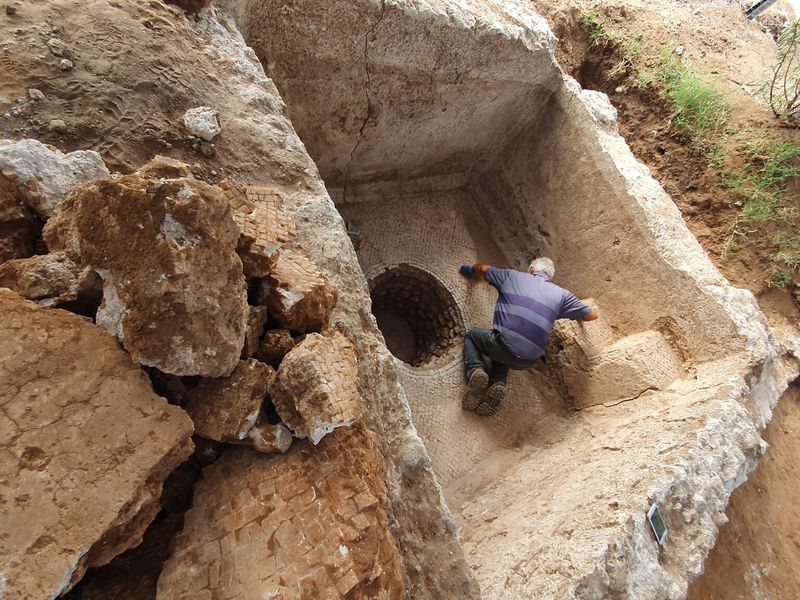
A Byzantine era coin showing Emperor Heraclius on one side and Golgotha, the site of Jesus Christ’s crucifixion on the other — along with a complete winepress — was unearthed this week outside Tel Aviv, Israel.
Both the 1,400-year-old currency and the wine press, which has mosaics on its floor, date back to the Byzantine period in Israel.
The 1,500-year-old settlement in which they were unearthed is located in what is now the Tel Aviv suburb of Ramat Ha-Sharon.
Archaeologists say that the large wine press clearly shows that the site was a center of agricultural-industrial activity during the Byzantine period. Researchers from the Israel Antiquities Authority (IAA) also unearthed the foundations of a large structure that may have served as a warehouse of some kind, or perhaps a farmstead.
Excavation leader Yoel Arbel states “Inside the buildings and installations, we found many fragments of storage jars and cooking pots that were evidently used by laborers working in the fields here.
“We also recovered stone mortars and millstones that were used to grind wheat and barley and probably also to crush herbs and medicinal plants.”

According to Smithsonian magazine, Arbel believes that most of the stone implements were made of basalt from the Golan Heights and the Galilee region, located 50 to 100 miles northeast of the settlement.
The Times of Israel states that the coin was minted in either 638 or 639 AD during the reign of Byzantine emperor Heraclius. One side, shown above, depicts the emperor and his two sons.
The reverse side of the coin contains not only a representation of the hill of Golgotha, the site of the crucifixion of Christ, but also an inscription, believed to be the name of the coin’s owner.
The name was etched onto its surface in Greek and possibly Arabic, says Robert Kool, a coin expert from the IAA.
“The coin encapsulates fascinating data on the decline of Byzantine rule in the country and contemporary historical events, such as the Persian invasion and the emergence of Islam, and provides information on Christian and pagan symbolism and the local population who lived here,” Kool notes in the statement from the IAA.
Archaeologists also uncovered later artifacts, including oil lamps, a glass workshop, and a warehouse with large vessels for the storage of grain and produce, dating back to the early Islamic period, which began in the seventh century AD.
Arbel notes “In this period, people were not only working at the site but also living there, because we discovered the remains of houses and two large baking ovens.”
The researchers say that they believe the site remained occupied and in use until the 11th century AD.
The dig was undertaken before the development of a new neighborhood in the area begins.
IAA Tel Aviv District archaeologist Diego Barkan states “This is the first archaeological excavation ever conducted at the site, and only part of it was previously identified in an archaeological field survey.
“The Israel Antiquities Authority views this as an excellent opportunity to integrate the ancient remains into plans for the future municipal park.”
Avi Gruber, the mayor of Ramat Ha-Sharon, assures the public in the statement that local officials are working with the developers of the new neighborhood to integrate the historical site into the area.
“I want all our residents to enjoy learning about life here in antiquity and in the Middle Ages,” he states.
See all the latest news from Greece and the world at Greekreporter.com. Contact our newsroom to report an update or send your story, photos and videos. Follow GR on Google News and subscribe here to our daily email!



